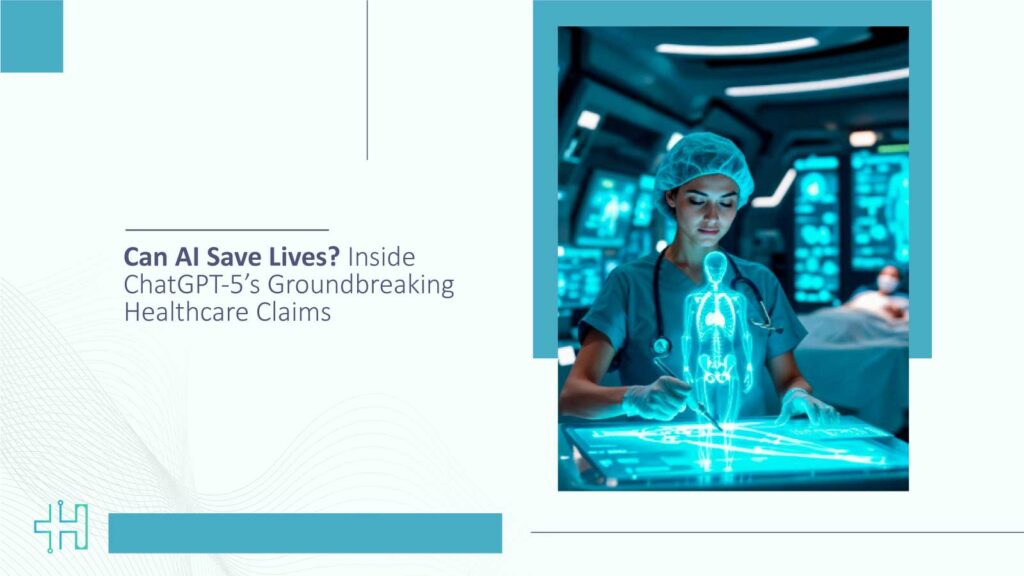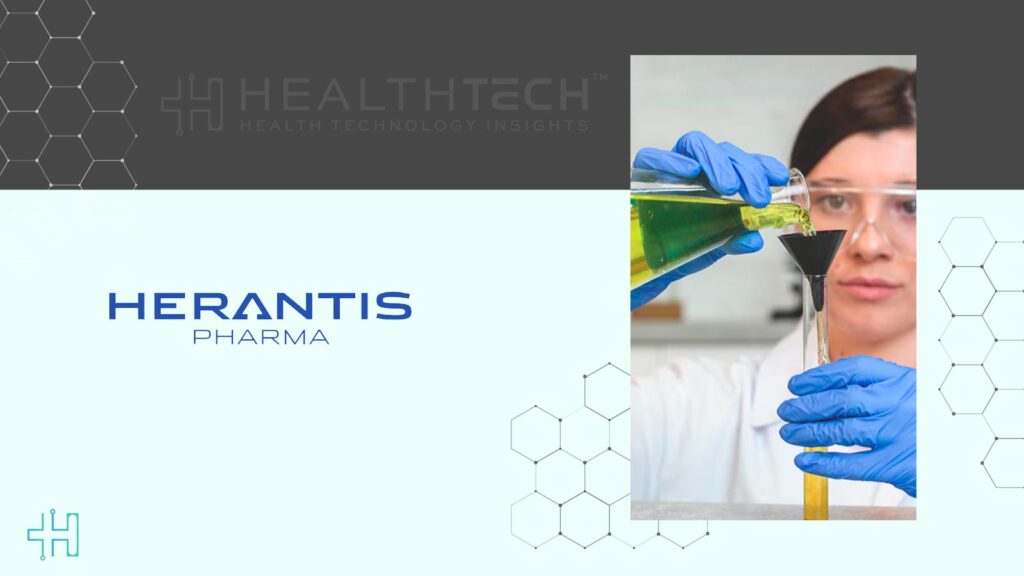In August 2025, OpenAI unveiled ChatGPT-5 with a claim that turned heads far beyond the tech world. This AI can now detect early signs of cancer and other major health conditions through natural language interaction. For a technology originally built to answer questions and draft text, this shift into the clinical arena is nothing short of transformative.
The idea of ChatGPT acting as a first-line health companion may sound futuristic, but it’s already making a difference. Consider patients who struggle to interpret biopsy reports or navigate a flood of medical jargon. Instead of waiting days for follow-up calls, they could now get instant, AI-powered explanations that help them engage more confidently with their doctors. For busy healthcare providers and decision-makers, this is more than a novelty; it’s a glimpse at a future where AI becomes a routine part of the diagnostic process.
This article unpacks how ChatGPT-5’s healthcare capabilities work, where they fit in the U.S. and global healthtech landscape, and why industry leaders are watching closely.
What Makes ChatGPT-5 Different in Healthcare
ChatGPT has been through several evolutions, but GPT-5 marks a significant leap. According to OpenAI, the new model has been tested against specialized medical benchmarks co-developed with over 250 physicians. In controlled evaluations, it demonstrated improved accuracy in interpreting medical results, offering treatment explanations, and recognizing patterns linked to diseases like cancer, cardiovascular disorders, and metabolic syndromes.
Key improvements over previous versions include:
- Sharper Medical Reasoning: Reduced “hallucination” rate in medical responses, making outputs more reliable.
- Faster, Context-Rich Answers: The system now processes complex, multi-step health queries without losing context.
- Enhanced Safety Layers: Built-in guardrails to prevent dangerous or misleading health advice, with prompts to seek professional care.
These updates aren’t just technical upgrades. They reflect a deliberate move to position ChatGPT as a trusted ally in healthtech, one that complements, rather than replaces, human clinicians.
What makes this especially relevant to the U.S. market is the country’s growing shortage of primary care providers. AI tools like ChatGPT could ease pressure on overburdened systems by assisting with patient education, triage, and preliminary information-gathering, all while improving access in rural and underserved areas.
Early Cancer Detection: Promise and Proof
The most attention-grabbing claim about ChatGPT-5 is its potential role in early cancer detection. While it’s not a diagnostic device, OpenAI says the model can help identify patterns in lab reports, imaging summaries, and patient narratives that may suggest early warning signs.
A case highlighted in recent coverage involves a patient named Carolina, who had multiple cancer diagnoses over time. Using ChatGPT-5, she was able to interpret her biopsy results, understand treatment terminology, and prepare more informed questions for her oncologist. This wasn’t about replacing her doctor; it was about walking into the clinic with clarity and confidence.
Clinical research offers early validation of this approach. In controlled testing using anonymized patient data, GPT-5 demonstrated a higher detection accuracy than earlier models on benchmark datasets for oncology-related reasoning. Although OpenAI hasn’t released full peer-reviewed results yet, they say these evaluations were developed in collaboration with medical specialists and tested against real-world case simulations.
For U.S. healthcare decision-makers, this technology aligns with ongoing national efforts to shift from reactive to preventive care. Early detection is the cornerstone of this strategy, catching diseases at a stage when they are more treatable, less costly, and less disruptive to patients’ lives. If AI can help flag possible concerns before symptoms escalate, the potential impact on survival rates and healthcare spending could be significant.
Still, it’s essential to remember that AI interpretation is only as good as the data and context provided. ChatGPT can guide a patient toward timely medical attention, but it cannot replace a biopsy, an MRI, or the nuanced judgment of a trained specialist. In that sense, the technology’s role is to amplify the reach of existing healthcare systems, not bypass them.
How AI Like ChatGPT Fits Into the U.S. Healthtech Ecosystem
The U.S. healthcare market is at a tipping point where AI integration is moving from pilot programs to mainstream deployment. According to a 2025 survey by the American Hospital Association, more than 60% of large hospital networks have either adopted or are actively evaluating generative AI tools for patient engagement, medical documentation, and diagnostic support.
ChatGPT’s healthcare capabilities arrive at a time when providers face mounting pressure to improve outcomes while controlling costs. In rural communities where access to specialists can require hours of travel, AI tools embedded into telehealth platforms could offer a lifeline. By instantly summarizing medical records, flagging potential risk factors, or translating complex terms into patient-friendly language, ChatGPT could reduce friction in care delivery.
Investors are also paying attention. Rock Health reports that U.S. digital health startups focusing on AI raised $5.4 billion in the first half of 2025 alone, with clinical decision support ranking among the top-funded categories. For venture capital firms, the allure is clear: scalable AI solutions like ChatGPT can be integrated into multiple points along the healthcare value chain, from intake forms to post-treatment follow-up.
On the policy side, U.S. regulators are actively exploring frameworks for safe AI adoption in healthcare. The FDA has signaled openness to working with developers to create pathways for generative AI systems that complement, rather than replace, licensed clinicians. This is crucial for building public trust, as early adopters will want reassurance that the technology meets both safety and ethical standards.
As these forces converge, including technology readiness, provider demand, investor enthusiasm, and regulatory engagement, ChatGPT is well-positioned to become part of the broader healthtech toolkit. The question is less about whether it will be used and more about how responsibly it will be deployed.
Ethical, regulatory, and clinical oversight considerations
Healthcare leaders want progress with safeguards. That balance is achievable with clear rules and workflow design.
Start With The Scope
OpenAI’s launch notes describe stronger reasoning and guardrails in GPT-5. They also stop short of calling it a medical device. That distinction matters for hospitals and vendors that plan to deploy it in care settings.
Understand the FDA Landscape
The agency regulates software as a medical device when claims reach into diagnosis or treatment. It has published pages on AI in device oversight and keeps a public list of cleared AI or ML devices. Many firms use a lifecycle approach that fits continuous model updates.
Use International Guidance Where Helpful
The World Health Organization issued recommendations for large multimodal models in health. The guidance covers transparency, data quality, bias testing, and human oversight. These points align well with health system governance boards.
Adopt a Risk Framework
NIST’s AI Risk Management Framework and its Generative AI profile give leaders a common language for controls. Map the use case. Measure model behavior. Manage residual risk. Govern with clear accountability.
Be Clear With Communications
STAT recently noted the tension between promoting health advice and avoiding device claims. Consistent messaging helps vendors and health systems set correct expectations for patients and staff.
Keep Clinicians in The Loop
Configure the model to cite sources, surface uncertainty, and nudge follow-up with qualified clinicians. Require human sign-off for high-stakes actions. Use audit logs. These steps support trust without slowing care.
Design For Equity
Pair model deployment with patient-friendly language, interpreter services, and mobile access. Test with diverse data and real users before broad release. Measure impact on access and outcomes, not only accuracy.
Finally, monitor performance in the field. Track escalations, turnaround time, and patient understanding. Review sample interactions each week. Retrain staff as features evolve. This loop keeps safety and value aligned over time.
The Future of Care Experience with Healthcare-Capable AI
ChatGPT’s evolution into a healthcare-capable AI is more than a technical upgrade; it signals a shift in how we think about access, prevention, and patient empowerment. By interpreting complex medical information, guiding patients toward timely care, and supporting clinicians with contextual insights, GPT-5 could help reshape the care experience in the U.S. and around the world.
For healthtech leaders, the opportunity lies in integrating this capability where it adds genuine value: preventive screening, patient education, and enhanced telehealth services. For clinicians, the challenge and the reward are in using ChatGPT to amplify their expertise without replacing the critical human judgment that underpins safe and effective care.
The road ahead will require thoughtful oversight, robust validation, and transparent communication with patients. It will also demand collaboration between technology developers, healthcare providers, regulators, and patients themselves. The promise is real: a future where AI like ChatGPT can help save lives, not by replacing human touch, but by making it more informed, timely, and accessible.
The healthcare industry has been talking about digital transformation for years. With tools like GPT-5, the conversation is shifting toward measurable impact. The next step is clear: proving, at scale, that AI can deliver on its promise, one informed patient, one engaged clinician, and perhaps one early cancer detection at a time.
FAQs
1. Can ChatGPT replace a doctor for diagnosing health conditions?
No. ChatGPT can help interpret medical information and suggest next steps, but it does not replace a qualified medical professional.
2. How does ChatGPT detect early signs of cancer?
It analyzes patterns in medical text, such as lab reports and patient histories, to flag possible issues. A clinical diagnosis still requires tests and a doctor’s judgment.
3. Is ChatGPT already being used in U.S. hospitals?
Some hospitals and telehealth providers are piloting generative AI tools like ChatGPT for patient engagement and education, but large-scale deployment is still in early stages.
4. How does ChatGPT handle patient data privacy?
When integrated into healthcare systems, data privacy is managed by those systems’ security protocols and regulations, such as HIPAA in the U.S.
5. Could ChatGPT be used in countries with limited healthcare access?
Yes. If adapted for local languages and contexts, ChatGPT could help explain test results, guide care steps, and improve health literacy in underserved areas.
Dive deeper into the future of healthcare.
Keep reading on Health Technology Insights.
To participate in our interviews, please write to our HealthTech Media Room at sudipto@intentamplify.com






